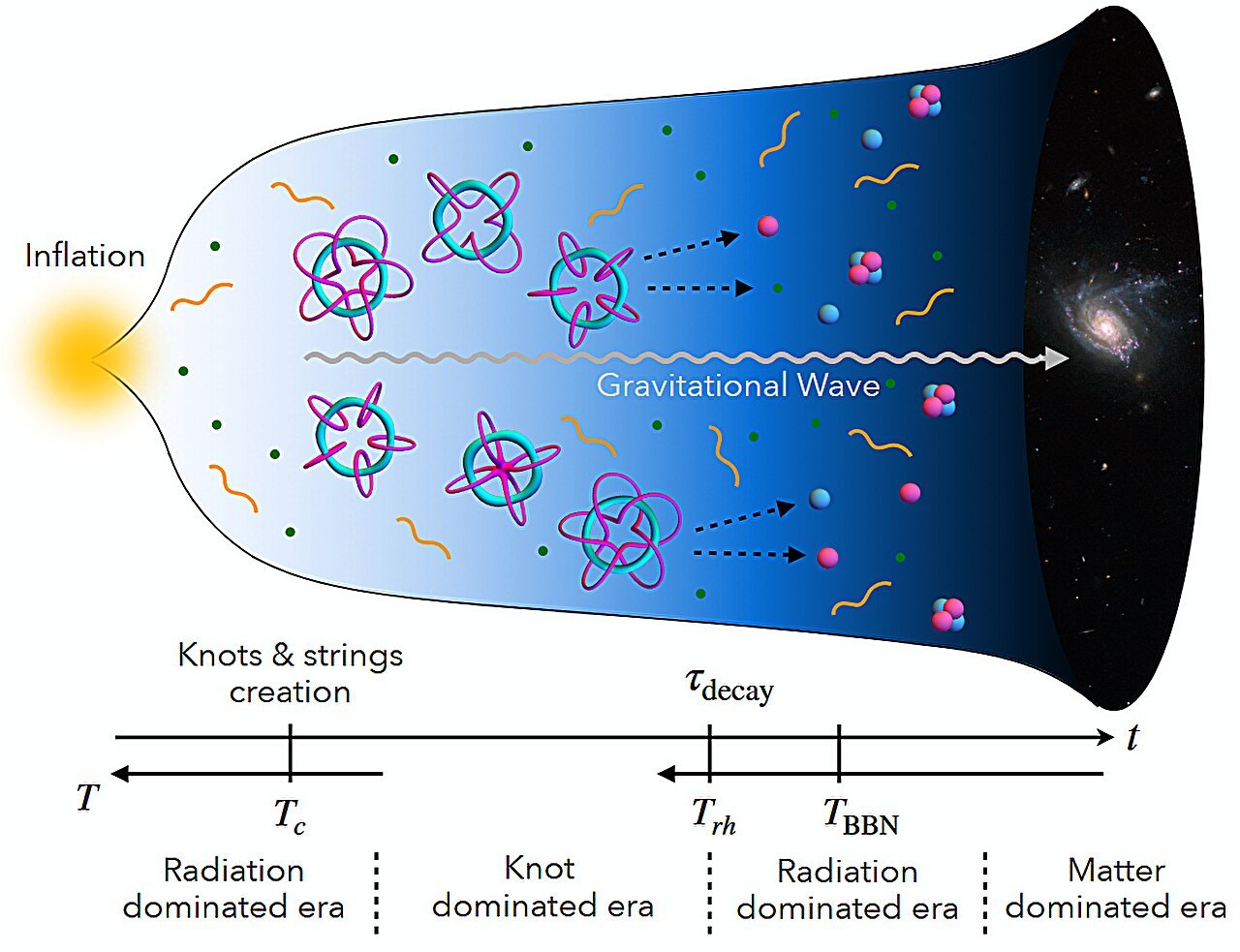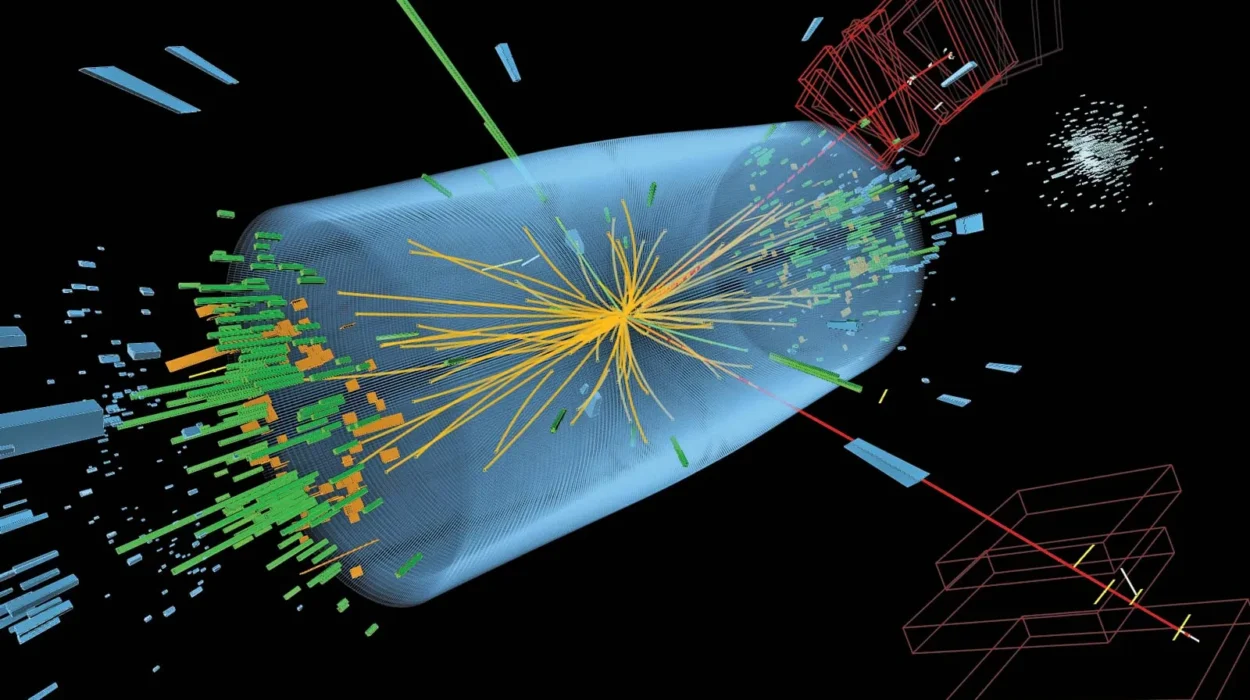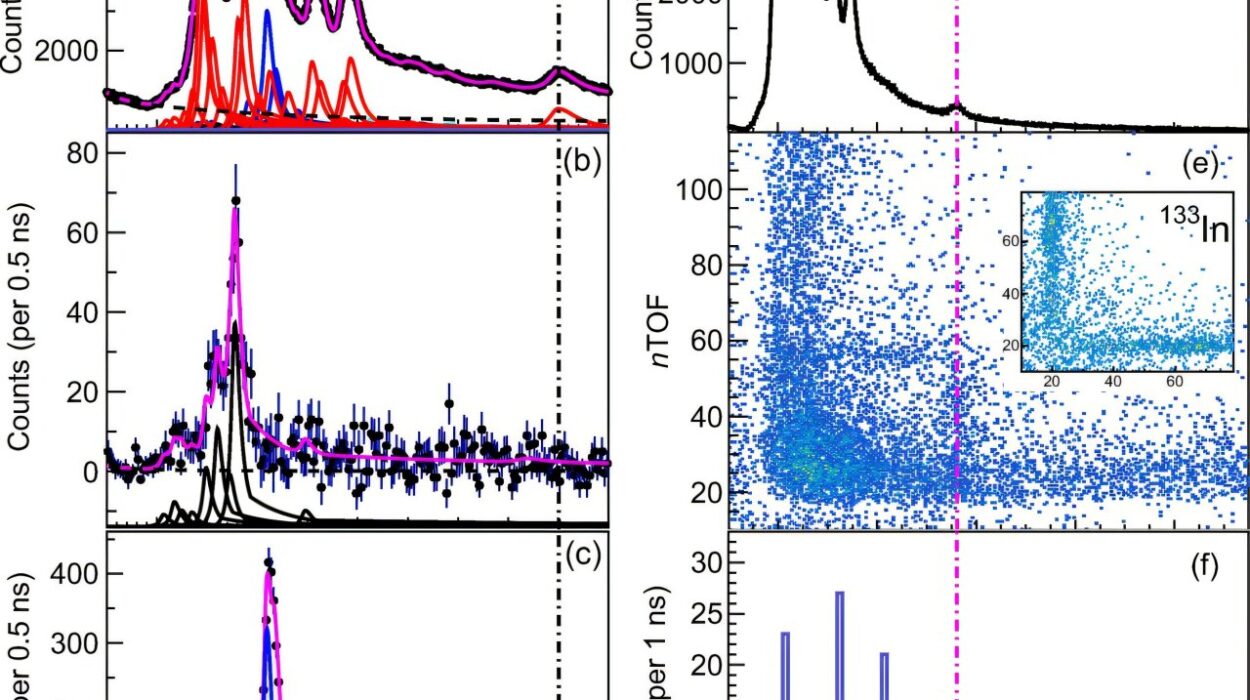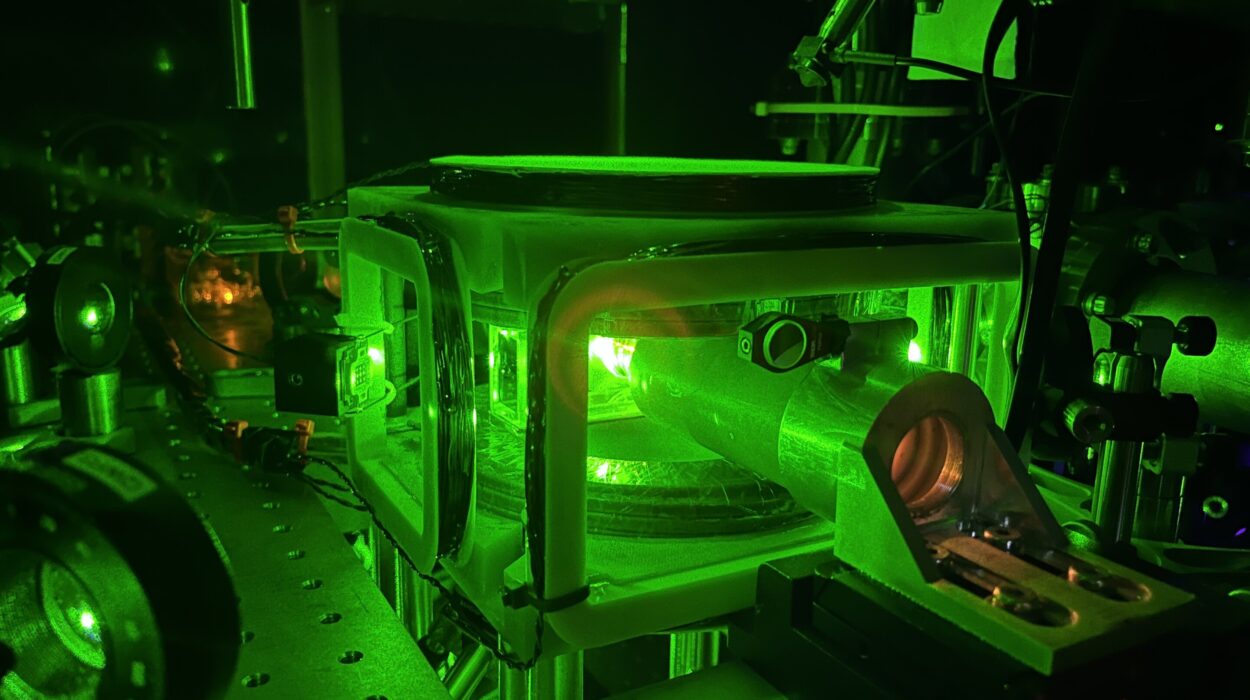In 1867, Lord Kelvin proposed a picture of atoms that now sounds almost mythic. He imagined that atoms were not tiny billiard balls or miniature solar systems, but twisting knots in an invisible medium called the aether. When it became clear that aether does not exist, his vision collapsed with it. Physics marched on to quantum mechanics, nuclear forces, and quarks. Kelvin’s knots were thrown away — a historical curiosity, a wrong turn.
But sometimes a wrong turn leaves behind a map to something deeper. More than 150 years later, a new theory hints that Kelvin may have been wrong in detail but right in spirit. Atoms are not knots — but knots might still be responsible for why atoms exist at all, and why the universe did not self-annihilate at birth.
Now, for the first time, physicists in Japan have shown that stable knots can arise naturally in a realistic particle-physics framework — not a fantasy model, not a toy equation, but a mathematically consistent theory built to answer some of the most stubborn mysteries in modern cosmology. Their work, published in Physical Review Letters, suggests these “cosmic knots” could have been born in the wild turbulence of the infant universe, dominated for a brief epoch, collapsed in a very specific way, and left behind an irreversible imbalance that made matter win over antimatter. Everything from galaxies to carbon chains to the neurons reading these words would then be the residue of that imperfect untying.
“This study addresses one of the most fundamental mysteries in physics: why our universe is made of matter and not antimatter,” said Muneto Nitta, the study’s corresponding author. “This question is important because it touches directly on why stars, galaxies, and we ourselves exist at all.”
The Universe That Should Not Exist
The Big Bang should have produced matter and antimatter in perfect mirror symmetry. For every proton, an antiproton; for every electron, a positron. When the twins meet, they annihilate in a flash of pure radiation. If the universe had obeyed that symmetry strictly, there would be no atoms, no planets, no moss or mountains or microbes or brains — just silent light expanding forever.
And yet the cosmos is made almost entirely of matter. Antimatter is not merely rare; it is nearly absent. To produce everything that now exists — all stars, all galaxies, all chemistry — the early universe needed only the tiniest imperfection: one extra matter particle for every billion matter–antimatter pairs. That tiny residual sliver became everything.
Where did that asymmetry come from? The Standard Model of particle physics, a theory so accurate it predicts some quantities to 11 decimal places, cannot generate it. By its own rules, we should not be here. That failure is not a detail — it is a deep crack at the foundation of physics.
The new knot-based framework claims to supply the missing piece.
Two Old Symmetries Meet for the First Time
The Japanese team — Nitta and Minoru Eto of WPI-SKCM2 at Hiroshima University, together with Yu Hamada of DESY in Germany — began by combining two long-studied extensions of the Standard Model: a gauged B–L symmetry (baryon number minus lepton number) and the Peccei–Quinn (PQ) symmetry.
Each of these was invented decades ago to solve a different long-standing problem. B–L symmetry explains why neutrinos, the ghostlike particles that cross whole planets without notice, have mass. The Peccei–Quinn symmetry solves the strong CP problem — the puzzle of why neutrons do not exhibit a tiny electric dipole moment that theory otherwise predicts — and in doing so, it introduces the axion, the leading candidate for dark matter.
Individually, these symmetries are well-trod ground. But no one had combined them in a single physical model and then asked a deceptively simple question: what structures would this hybrid universe allow to form?
The answer was a surprise. The combination does not remain smooth. It can knot.
The Birth of Knots in a Cooling Universe
In the first instants after the Big Bang, the cosmos was so hot and dense that its fundamental symmetries were intact. As it expanded and cooled, those symmetries cracked in a sequence of phase transitions — like water freezing into ice with fractures running through it. Those fractures can form line-like defects called cosmic strings.
The breaking of the B–L symmetry generates magnetic flux tubes — strings with trapped magnetic fields. The breaking of the PQ symmetry produces vortices with superfluid behavior but no magnetic flux. Alone, each type is well understood. Together, they can interlock.
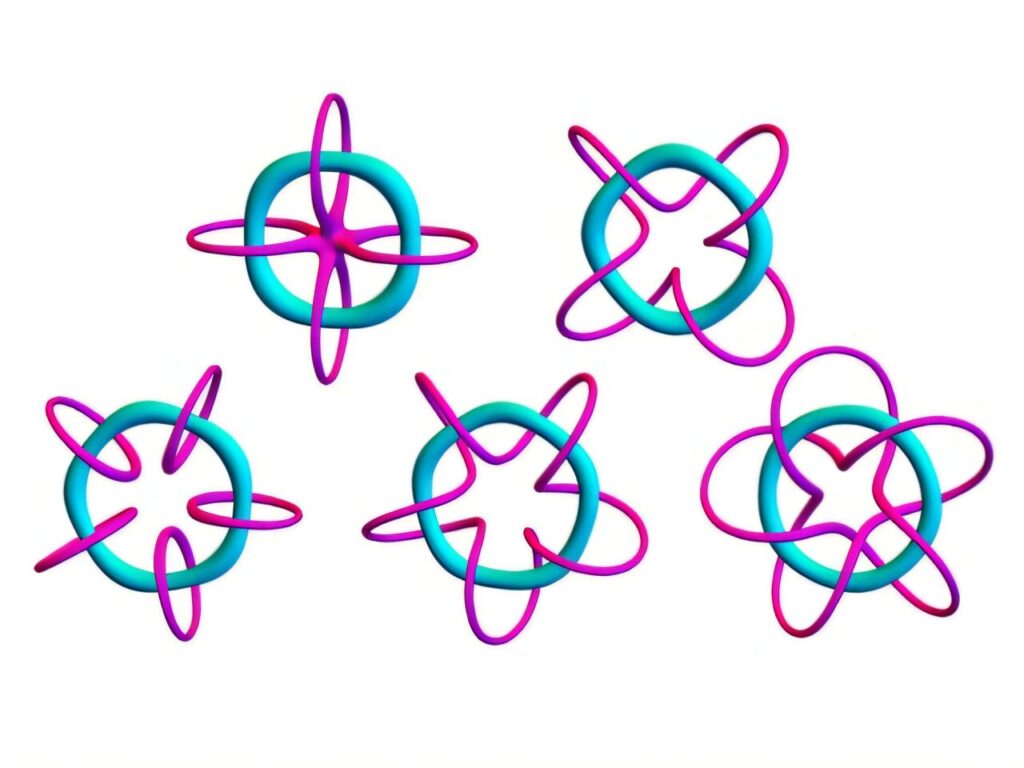
The PQ vortex couples to the B–L flux tube via a Chern–Simons term — an exotic mathematical linkage that allows the vortex to pump charge into the tube. That charge flow counteracts the tube’s tension, preventing it from snapping back into nothing. The two objects lock into a metastable, self-stabilizing knot: a soliton made not of rope but of fields threaded through spacetime.
“Putting them together revealed a stable knot,” Nitta said. Not stable forever — stable just long enough to matter.
A Temporary Kingdom of Knots
Radiation thins rapidly as space expands. Knots, acting like matter, thin far more slowly. As the early universe ballooned, the knots soon overtook all other energy sources. There was a fleeting epoch when they were the dominant substance in existence — not atoms, not light, but tensioned loops of topological energy.
And then they died.
Not by gradual decay, but by quantum tunneling — slipping through the energy barrier that kept them tied. When a knot collapses, its imprisoned fields explode into particles in a violent shower. Crucially, those showers inevitably include heavy right-handed neutrinos — required by the B–L symmetry that made the knots possible.
Those heavy neutrinos then decay, and do so with a tiny built-in bias for matter over antimatter. That small bias seeded the enormous consequence: after the annihilations that wiped out symmetric pairs, a tiny excess of matter remained. That excess grew into everything that exists.
If knots existed, they did not merely decorate the early universe — they fathered it.
A Signal That Can Be Heard
Most proposals for baryogenesis — the birth of matter — are almost impossible to test. They operate at energies unreachable by any human instrument. But this knot framework leaves something behind: a gravitational-wave signature frozen into spacetime itself. A reheating temperature around 100 GeV — the range the model naturally lands on — would tilt the newborn gravitational-wave background toward frequencies that next-generation detectors like LISA, Cosmic Explorer, and DECIGO could actually hear.
For once, a theory about the origin of everything is not condemned to remain untestable. If that hum is there, and if its slope matches the one predicted by a knot-dominated era, the implication would be staggering.
Kelvin’s discarded dream — not atoms as knots, but knots as the reason atoms exist — would be vindicated.
The Return of a Wrong Idea With a New Fate
Kelvin guessed atoms were knots. He was wrong about atoms, wrong about aether — but his intuition that nature might encode structure through topological tangling may prove prophetic in a different register. The things that built us may never have been particles at first, but knots of fields locked by symmetry, living briefly and dying decisively, writing asymmetry into a universe that would otherwise have canceled itself out.
The next steps are clear: refine the theory, run deeper simulations, and wait for the new observatories to open their ears to spacetime. If they hear what the equations predict, then a forgotten 19th-century metaphor will become a 21st-century origin story — not of atoms as knots, but of existence itself tied, twisted, and finally loosed by them.
More information: Minoru Eto et al, Tying Knots in Particle Physics, Physical Review Letters (2025). DOI: 10.1103/s3vd-brsn
